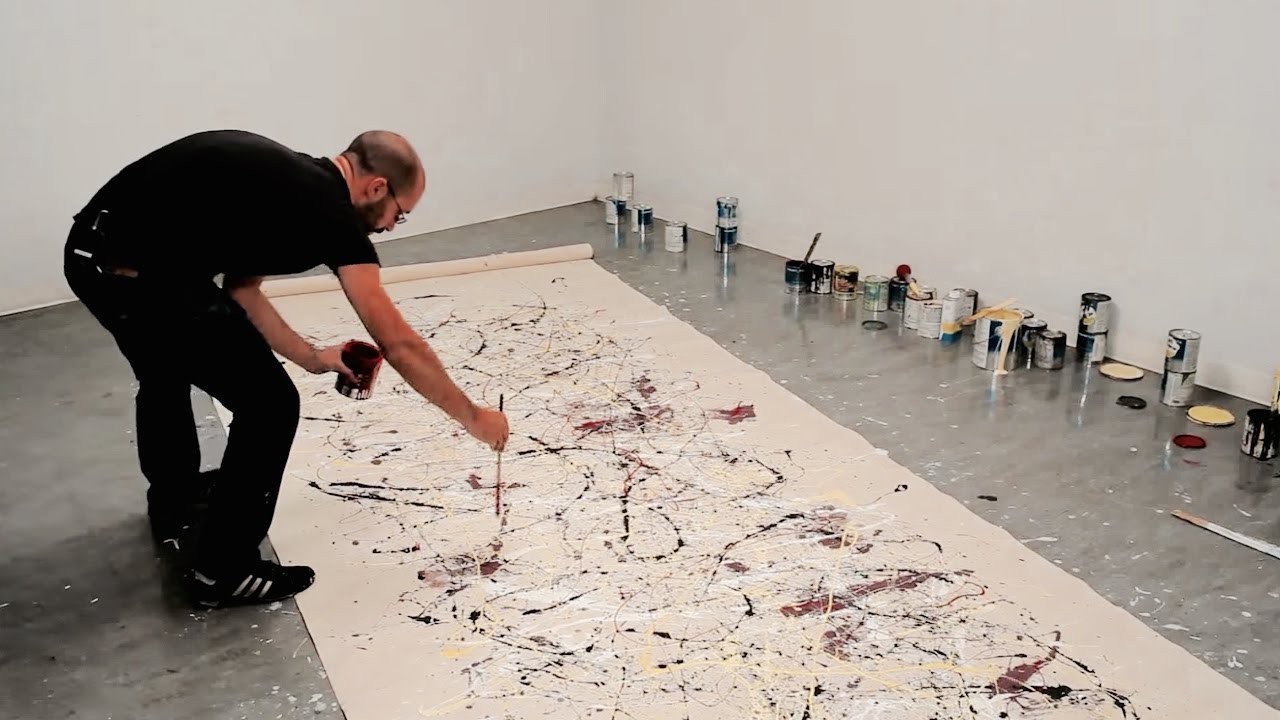
Robert Draws – Jackson Pollock’s Drip Technique revolutionized modern art. His chaotic style redefined the boundaries of painting. Abstract expressionism was transformed by his bold gestures. Art critics were divided, but audiences were intrigued. His method broke away from traditional brushwork. Emotion replaced precision in each canvas.
Pollock began experimenting with new techniques in the 1940s. He dripped, poured, and splattered paint across large canvases. His tools included sticks, trowels, and hardened brushes. He flung paint with dramatic energy. Pollock used the floor instead of an easel. This allowed him complete freedom of movement.
He spread canvases on the studio floor. Each motion felt deliberate yet instinctive. His body danced with the paint. The studio became his stage for creation. Chaos transformed into a calculated expression. Color and form emerged without direct representation. His paintings lacked a focal point. Every inch mattered equally to the whole.
“Read about: Leonardo da Vinci’s Genius: Bridging Art, Science, and Invention”
Pollock viewed painting as a personal journey. Inner emotion guided his artistic decisions. He tapped into the subconscious during creation. Jungian psychology inspired his technique. Drip painting became a form of therapy. Action replaced planning during his process.
Each work reflected his inner turmoil. Anger, joy, and confusion spilled onto the canvas. He made color choices based on emotion, not visual appeal. Viewers were drawn to his honesty. The works encouraged interpretation and feeling. He deliberately avoided traditional structure. Movement was captured in static form.
Pollock’s style shocked the art world. Traditionalists rejected the chaos of his technique. Meanwhile, others hailed him as a genius. His exhibitions attracted audiences globally. Eventually, recognition grew as interest in abstract expressionism rose. Major galleries around the world collected his paintings.
For example, the Museum of Modern Art strongly supported his artistic rise. “Number 1, 1950” earned fame as an iconic piece. Furthermore, critics actively debated the deeper meaning of his work. Many called Pollock the leader of abstract expressionism. In addition, academic circles frequently analyzed his unique style. Later artists, consequently, drew inspiration from his approach.
Moreover, pop art and performance art embraced the same intense energy. Pollock shaped the foundation of modern American art. Thus, the National Gallery created programs to honor his influence. Today, many institutions explore and expand on his method. Art schools include drip painting in their curricula. Finally, countless modern painters credit him as a major influence.
“Read more: Choosing the Right Screws for Your Garage Door Hardware”
Pollock’s art was highly physical. Movement played a central role in his style. Specifically, his whole body engaged with the canvas. Energy flowed from his limbs directly into the paint. As a result, paintings emerged in bursts of intense motion.
Additionally, music often played in the background. Jazz strongly influenced his rhythm and flow. For instance, his method was instinctive rather than pre-planned. The process itself held as much value as the final result. Consequently, viewers could feel the motion in his work. His style was described as “action painting.” It emphasized gesture over form.
Moreover, the canvas acted as a record of performance. Paint was allowed to fall freely, without constraint. Through repetition, textures were built layer by layer. Colors were chosen impulsively, reflecting his spontaneous energy. Notably, surface details revealed the speed at which he created. His technique received both criticism and admiration.
Today, Pollock’s influence is still visible. Drip painting appears in many modern galleries. Street artists use similar chaotic methods. Installations have adopted his movement-focused approach. His style is echoed in digital design.
Art therapists use his techniques in practice. Emotional release is encouraged through messy creation. His philosophy has reached beyond fine art. Graphic designers borrow from his spontaneous energy. Pollock’s ideas challenge control in creation.
The art world respects his boldness. His freedom paved the way for experimentation. Art was redefined through motion. He taught that beauty lies in the raw and real. Artists continue to explore what Pollock began.